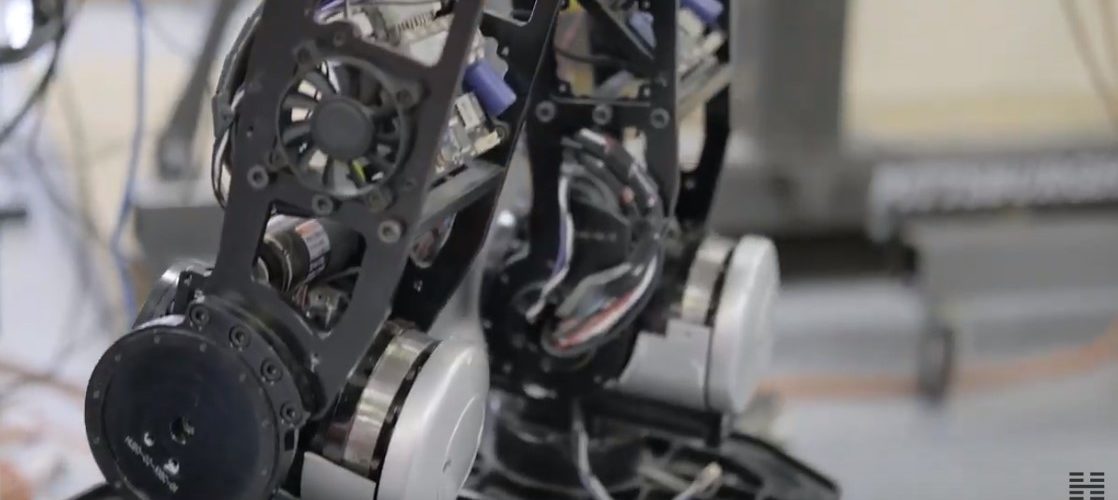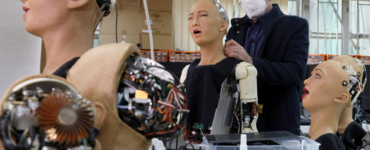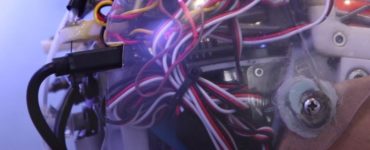Why a Robot Needs Legs
In the field of social robotics, a robot must be able to function in a human world designed by humans, including navigating stairs, steps, and uneven floor coverings. Social robots must also be able to communicate with people, including verbal and nonverbal social cues. The use of robotic legs is vital for both of these functions since they provide robots with autonomy and serve as an essential tool for non-verbal communication.
In fact, according to research conducted by Albert Mehrabian, author of Silent Messages: Implicit Communication of Emotions and Attitudes, 93% of human social interaction is nonverbal. So, social robots with robotic legs have a “leg up” in communicating with humans. For instance, robots with legs can choose the most appropriate angle and distance to their conversational partner depending on the type of relationship. They can utilize movement synchrony to increase bonding, and mimic subconscious human behaviors that convey social meaning to better connect with humans.
Watch The Making of Sophia: Sophia’s Legs
The Making of Sophia’s Legs
Sophia the Robot, our latest and most advanced robot, is a social humanoid robot that also serves as an AI and robotics research platform. Sophia’s custom robotic leg design began in 2017 by the Rainbow Robotics Company and the Drones and Autonomous Systems Lab at the University of Nevada Las Vegas and debuted at CES 2018.
“Integrating Sophia with a (robotics) body that can allow her to walk completes her physical form so she can access the full range of human experiences, which will help her learn to live and walk among us,” —- David Hanson
The foundation of Sophia’s leg design, including control software and state-of-the-art sensors, is based on a Korean social humanoid robot named Jaemi-HUBO (HUBO 2), a predecessor of DRC-HUBO, the distinguished award-winning disaster relief robot who can either walk or roll using wheels on his knees. Both Jaemi-HUBO and Sophia’s legs are similar to those of DRC-HUBO, but they are both smaller and more focused on social interaction. For example, Sophia’s legs were customized for her height and mass to fit the proportions of her torso and to increase her walking stability.
You might be familiar with another famous HUBO robot with similar robotic legs, Albert HUBO, also designed as a collaboration between KAIST and Hanson Robotics.
Sophia’s legs are powered similarly to DRC-HUBO and Jaemi-HUBO, with twelve 48 V motors, a total of six for each leg. The two sources of power are the main power board on her back and the battery packs on her legs, which also power her torso and head.
It’s Called PODO Software for a Reason
To control Sophia’s legs, a customized version of the PODO software, originally designed for operating DRC-HUBO and Jaemie-HUBO. PODO means “grape” in Korean, and so the software is aptly named because each program can be integrated and removed from the main root quickly and easily. In this way, each independent program or algorithm comes together like a cluster of grapes. The real-time robot controlling framework allows multiple people to work independently and concurrently.
In the humanoid walking world, one on-going topic of research is the ability to handle uneven terrain. What humans typically think of as “flat” terrain can have a lot of variances, including slopes and small bumps or depressions in the ground, which are difficult for humanoid robots to navigate. The PODO software, however, includes state-of-the-art walking algorithms such as Model Predictive Control (MPC) walking, allowing the controller to respond to future disturbances before they happen. As a result, Sophia can stay balanced while walking over uneven ground, including slopes or changes in flooring material.
The Hardware Perspective
Sophia’s leg design includes some of the most advanced and high-end sensors in the world. These sensors include a state of the art Inertial Measurement Unit (IMU) that allows Sophia to measure her acceleration, rotational rate, balance, and trajectory. Sophia’s legs also have Force-Torque (FT) sensors that will enable her to “feel” how she is walking based on the forces acting on her body, and then adjust accordingly. In other words, for every step she takes, Sophia looks ahead for disturbances, calculates her balance and trajectory, and then makes adjustments to stop from slipping or toppling over.
What Sophia’s Mobility Means
Giving Sophia mobility through her robotic legs has allowed her to become more autonomous and experience the richness of the physical human world. Similarly, a walking social robot will enable humans to connect with Sophia in a completely different manner. As Hanson Robotics’ founder David Hanson stated, “Integrating Sophia with a (robotics) body that can allow her to walk completes her physical form so she can access the full range of human experiences, which will help her learn to live and walk among us.”
With hundreds of hours of development, cutting edge software, state of the art sensors, frequent tuning and calibration, Sophia can achieve what humans do with hardly a thought: walk.
It’s one small step for Sophia, one giant leap for robotkind!
The Hanson Robotics Team
Photo and Video Credits: Hanson Robotics Limited






Recent Comments